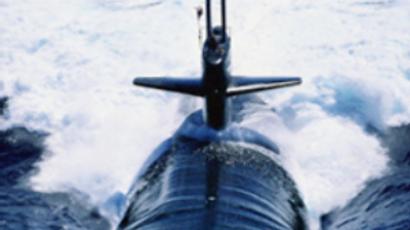Nuclear sub victims mourned
On Tuesday the Far Eastern Primorsky region will mourn the 20 people who lost their lives as a result of a tragic accident on board a Russian nuclear-powered submarine. A preliminary investigation into Saturday's accident, which left another 21 injured, s
It remains unclear why the fire extinguishing system was mistakenly activated and whether there were enough gas masks for the contractors who were poisoned.
The accident on board the Nerpa submarine happened in waters off Russia’s Pacific coast during training exercises.
The 20 who perished -17 people from the shipyard delivery team and three sailors – were killed by the release of a poisonous gas used to put out fires – known as Freon – which was triggered when the fire extinguishing system was accidentally turned on.
However, it is still unclear why everybody on the craft was unable to use safety equipment.
A high-ranking source at the Pacific Fleet's headquarters told RIA Novosti news agency: “Perhaps the submariners did not notice the gas being released and when they realised it was already too late.”
The chairman of the St Petersburg club for submariners Igor Kurdin has his own explanation of what happened. He thinks that it was a lack of special training for civilian victims that brought about their death.
He says an alarm is activated every time the fire extinguishing system is turned on. If that happens, sailors are obliged to use the safety equipment.
“If we talk about professional submariners, they know how to do this quickly and safely for themselves. But there were civilians on board and it was them who suffered most,” he said.
One of the factors that may also have contributed to the disaster was overcrowding. The submarine had 208 people aboard, including 81 seamen, according to Russian navy spokesman Igor Dygalo. Yet Russian news agencies said a sub of this type normally carries only 73.
The Investigative Committee under the Prosecutor General's office has launched a probe, which is focusing on what activated the firefighting system and possible violations of submarine operating rules.
A Russian Pacific Fleet spokesman said the vessel's reactor is intact and there was no radiation leak. Japan's Defence Ministry also confirmed radiation levels were normal. The submarine has returned to port.
Hundreds of people gathered in Vladivostok to mourn the country’s biggest naval tragedy since the Kursk disaster eight years ago.Church services were held to commemorate those who died and to pray that the injured make a full recovery.
The vessel was not yet part of the country's fleet but was due to be commissioned by the end of the year. Navy officials stress it's too early to say whether Sunday's incident would change those plans.
Construction of the Akula II (Shark) class Nerpa nuclear attack submarine began in 1991. However, because of a lack of funding, work was suspended for more than 10 years. The Akula II class vessels are considered the quietest and deadliest of Russia’s nuclear-powered attack submarines. The Nerpa started sea trials on October 27.
Son rescues father and dies
A father and son, Aleksandr and Vladimir Nezhura – both ventilation-system technicians – were on board the Nerpa when the accident happened. Twenty-five-year-old Aleksandr saved his father who had fainted when the gas started leaking. Komsomolskaya Pravda reports that he then came back to the poisoned section of the sub to help others, but died.
Vladimir is in an intensive care unit. He doesn’t know yet that his heroic son perished, as doctors worry that the news would kill him.
Aleksandr had always admired his father and was happy to follow n his footsteps. They’d been on the Nerpa since September. For Vladimir it was to be the last trip before retirement.
Aleksandr’s mother said her son was nicknamed «9-11» because he always trying to rescue others.
Nezhura junior had a wife and a child.
Previous accidents
The deadliest Russian submarine accident occurred on August 12, 2000, in the Barents Sea when the Kursk sank at a depth of 107 metres, killing 118 people. The nuclear sub was lifted from the seabed in June 2002.













